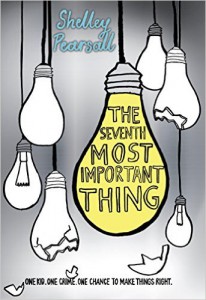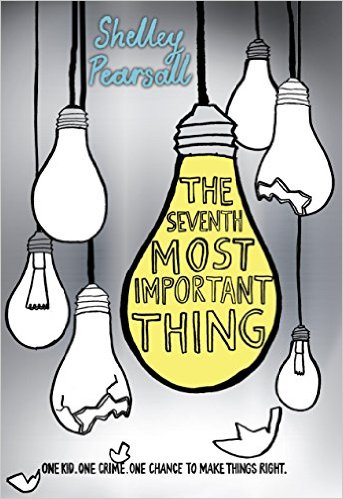Seven Reasons to Read The Seventh Most Important Thing
-
Set in Washington, D.C. in 1963, The Seventh Most Important Thing recalls a time when Looney Tunes, Bazooka bubble gum, and Mad magazines were popular and when diner tables were often cloaked with red and white checkered table cloths and it took a dime to use the pay phone.
-
It features characters like thirteen year old Arthur Owens who struggles to stop remembering his dad who died instantly when he hit a tree while riding his motorcycle and about whom his mother often said, “Tom Owens’s biggest problem was that he never grew up” (79); like probation officer Wanda Billie—famous for her talk to the hand gesture, making caramel corn, doing karate, and not sugar-coating anything; and like James Hampton—the eccentric artist known as the Junk Man who has a face that resembles rain-soaked and sagging cardboard and who teaches Arthur the seven most important things—“the building blocks of heaven” (140). Even minor characters like Groovy Jim and Reginald Buckley Pierce, a.k.a. Squeak, add color to the story.
-
It offers visions of heaven: a dazzling and glittering place with thrones, chariots, wings, and saints or a place “kind of like Florida with motorcycles” (131) and imagines that “some angels are like peacocks; others are less flashy. Like city pigeons. It all depends on the wings” (273).
-
A book meant to inspire, mystify, and delight, it teaches important lessons about tension, respect, apology, balance, artwork, support, and kinship—notice all the seven letter words. Seven, a sacred number among many peoples and the number of completeness and perfection, plays a significant role in Shelley Pearsall’s book.
-
It shares wisdom: A mind not thinking straight is like a runaway train—out of control and uncontrollable; death and grief cloud one’s vision; and “where there is no vision, the people perish” (65).
-
It honors second chances and shifting perspectives.
-
It celebrates art and artists whose works “turn death and war into something beautiful” (170).
- Posted by Donna

